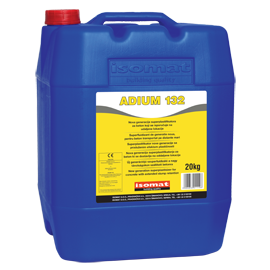Contrary to appearances, mortars like concretes are not inert and cold materials. To improve maneuverability and resistance to the tests of time, the use of admixtures and additives is almost always necessary. Your problem: Assembling bricks or blocks, a concrete slab to make you want to optimize the durability of your mortars and concretes in the face of temperature variations or water infiltration. With the Concrete Foaming Agent you can find the best option now.
Add a plasticizer during the implementation
When large quantities of concrete are to be used both in surface and in thickness, adding a plasticizer will have two key advantages. The first: Improve the resistance by reducing the amount of water needed for mixing concrete. The second: Increase the fluidity of concretes or mortars, they are easier to work and smooth without loss of performance.
Think about specific additives, depending on weather conditions

All the professionals will tell you, pouring concrete when the temperatures or the sunshine are very high presents a risk of degrading the qualities. What is true for extreme heat is also valid when temperatures drop. It must be able to work in all weathers. If you need to prepare a concrete in very hot weather, consider an adjuvant that will delay setting, maintaining the fluidity of the concrete during installation.
In cold weather, on the contrary, it is advisable to opt for antifreeze which will preserve the mortars as the concretes of the gel before complete hardening. These adjuvant have the characteristic of accelerating the reaction process of the cement. By taking faster, the concrete is less exposed to the risk of frost.
Finally, in these times of climatic disturbances which are characterized by very high thermal amplitudes, the concretes can be confronted with numerous cycles alternating Gel and Thaw. In this case, the integration of an air-entraining admixture will have the advantage of dispersing fine air bubbles in the concrete. After drying, these bubbles act as a structure that improves the resistance to successive phases of freezing and thawing.
Improve the water tightness of your mortar or concrete
If it is absolutely essential for structures such as ponds, tanks and foundations, water-repellent admixtures must also be used for pavements, screeds or coatings. Thanks to them, the porosity of mortars and concretes is considerably reduced without affecting their mechanical resistance properties.
A complete range for your mortar or concrete
With the different product ranges, you have a wide range of easy-to-use technical solutions to dramatically improve the physical properties of your mortars and concretes. More resistance to moisture, heat, frost, it is at the same time a better comfort of implementation, but also concretes and mortars displaying better durability in the time.
How Is A Liquid Concrete Characterized?
You can choose a more or less liquid concrete for your work. The liquidity of this material is evaluated by the Abrams test. The Abrams test consists of unmolding concrete cones and watching how they collapse. The stronger the sag, the more concrete is liquid.
How Do You Get A Liquid Concrete?
When seeking to form more liquid concrete, there are two conventional methods. One is to add water. The other is to add special products like the plasticizer or the plasticizer.

